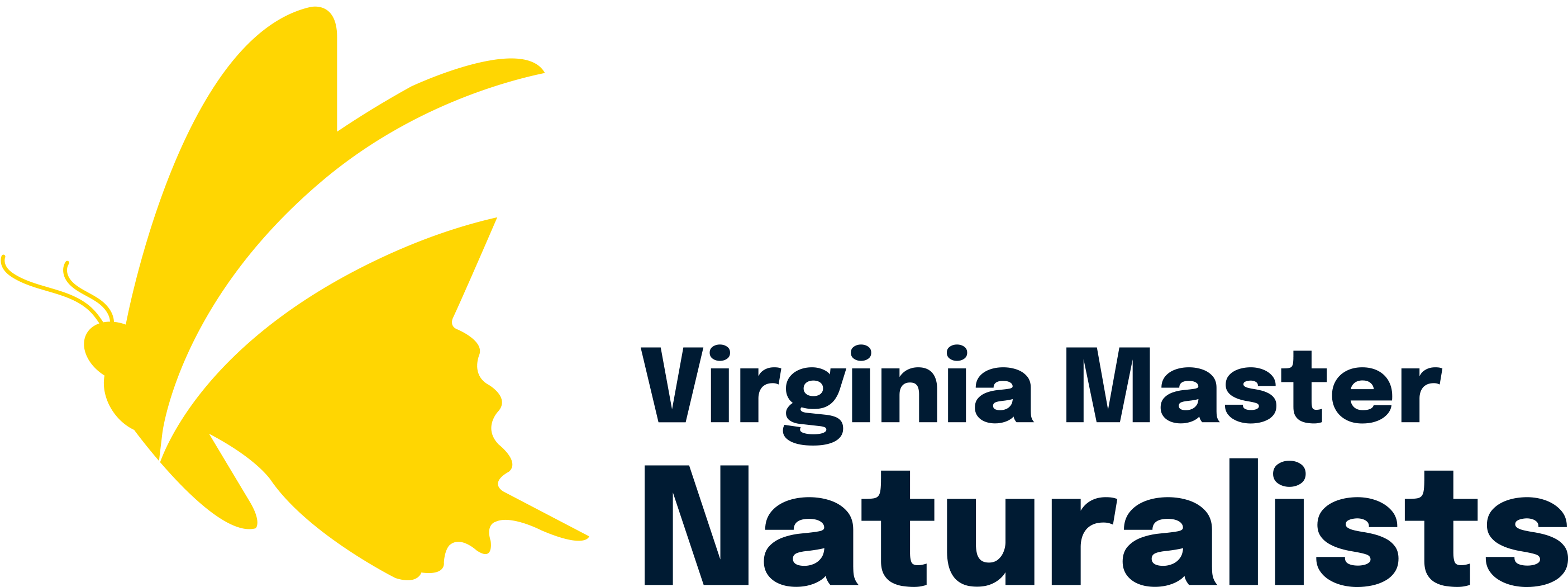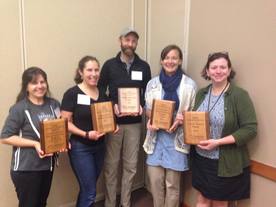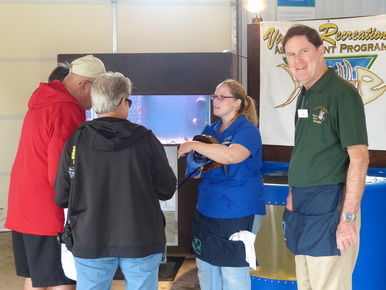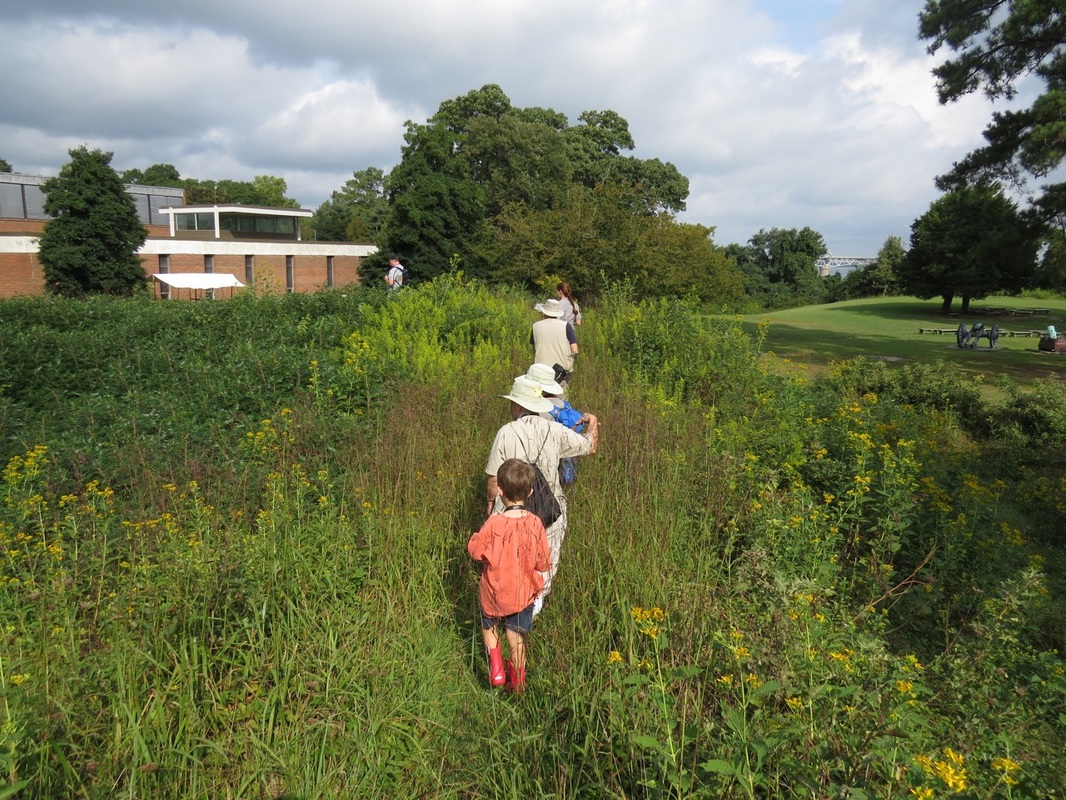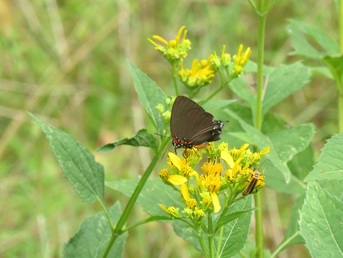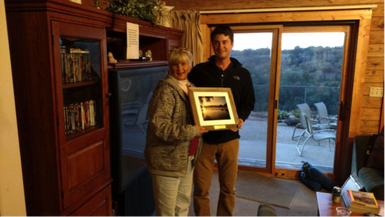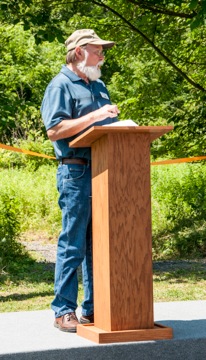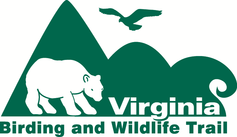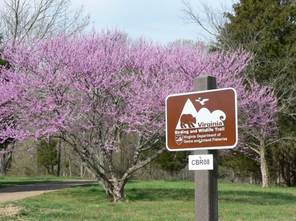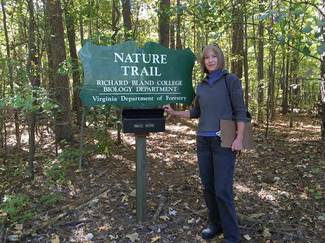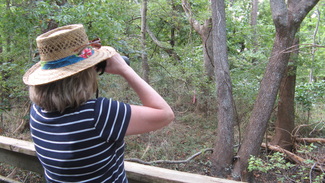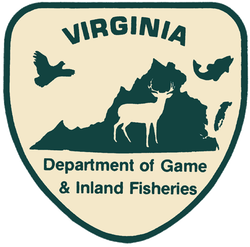This fall, we held a trivia contest in celebration of the 10th anniversary of the Virginia Master Naturalist program. Four volunteers submitted at least 8 out of 10 correct answers: Mary Loose DeViney (Rivanna Chapter), Pat Klima (Rivanna Chapter), Kathy Fell (Southwestern Piedmont Chapter), and Karen Dorgan (Riverine Chapter.) Mary Loose DeViney actually got 10 out of 10 correct! Each of them is receiving some gear (a fleece pullover or a hat/scarf set) so they can display their VMN pride while doing their volunteer work this winter.
Now for the answers you’ve been awaiting!
1. We now have annual statewide or regional conferences for the VMN program. They are a time to come together to celebrate accomplishments of our volunteers, explore a new area of the state, and participate in continuing education. In what city and in which year was the first VMN statewide conference held?
2008, Wytheville
2. At the beginning of the program, we started new chapters in batches. How many chapters were started in the first wave or cohort of VMN chapters?
Ten
3. We are fortunate to have many Virginia state agencies supporting our program. List each of the seven state agency sponsors of the VMN program by name and indicate which one has joined most recently.
Virginia Cooperative Extension, Virginia Department of Conservation and Recreation. Virginia Department of Forestry, Virginia Department of Environmental Quality, Virginia Department of Game and Inland Fisheries, Virginia Museum of Natural History, and the Virginia Institute of Marine Science’s Center for Coastal Resource Management (which is the newest sponsor.)
4. We have been using the same logo since close to the beginning of the program. What is the scientific name of the organism featured in the VMN program logo?
Papilio glaucus, the Eastern Tiger Swallowtail.
5. VMN volunteers who re-certify by completing 40 hours of volunteering and 8 hours of continuing education each year now receive special pins with Virginia species. What five species have been featured on VMN recertification pins? List them by common name.
Virginia Big-eared Bat, Flowering Dogwood, Northern Cardinal, Brook Trout, Spring Beauty
6. Choosing a chapter name can sometimes be hard! Which VMN chapter changed its name a year or two after getting started? Identify both its former and its current name.
We were thinking of the Shenandoah Chapter, which originally called itself the Daughter of the Stars Chapter. One volunteer submitted another answer we hadn’t considered previously, but that we accepted. The Peaks View Pioneers was a local Master Naturalist program that existed before our statewide program, but re-organized and became part of our statewide program as the Central Virginia Chapter.
7. Our program has grown quickly! How many VMN volunteers had been trained between the beginning of the program and the end of 2014?
3,241. You can find this number on our 10th anniversary infographic.
8. Representatives from our sponsoring agencies provide input into the program through two committees. Name three current members of the VMN Executive Committee.
You can find the list of Executive Committee members on our website.
9. In 2013 and 2014, we conducted a needs assessment and strategic planning process for the program to guide us through our next five years. Name one goal identified for the VMN program to achieve by 2020 in its strategic plan.
You can find all the strategic goals and the full plan on our website.
10. We’re still reaching new parts of the state! What is the name of the newest VMN chapter?
High Knob Chapter, based in Wise County
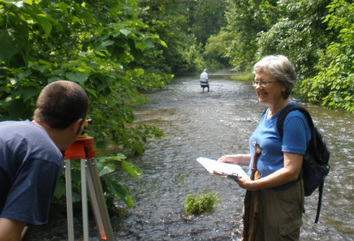 Some VMN volunteers monitor local streams and rivers. Image by Rose Brown.
Some VMN volunteers monitor local streams and rivers. Image by Rose Brown. 